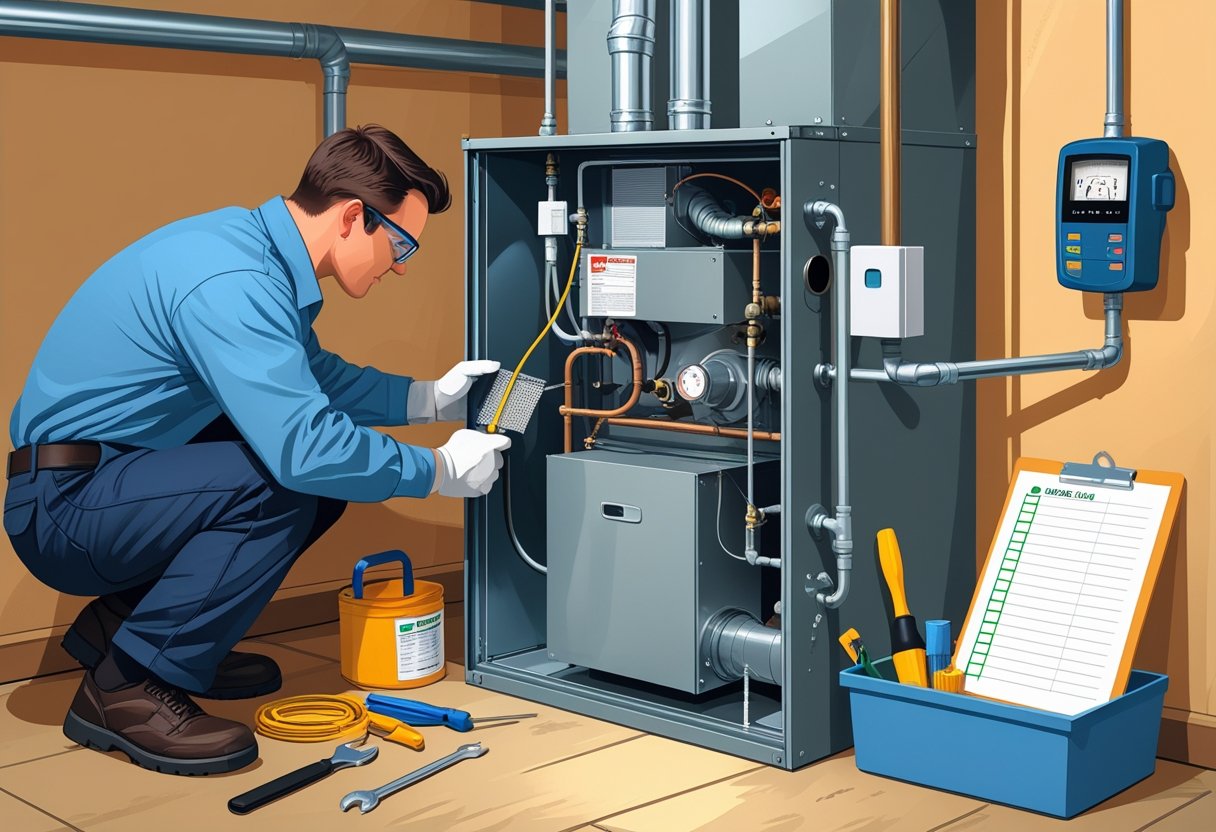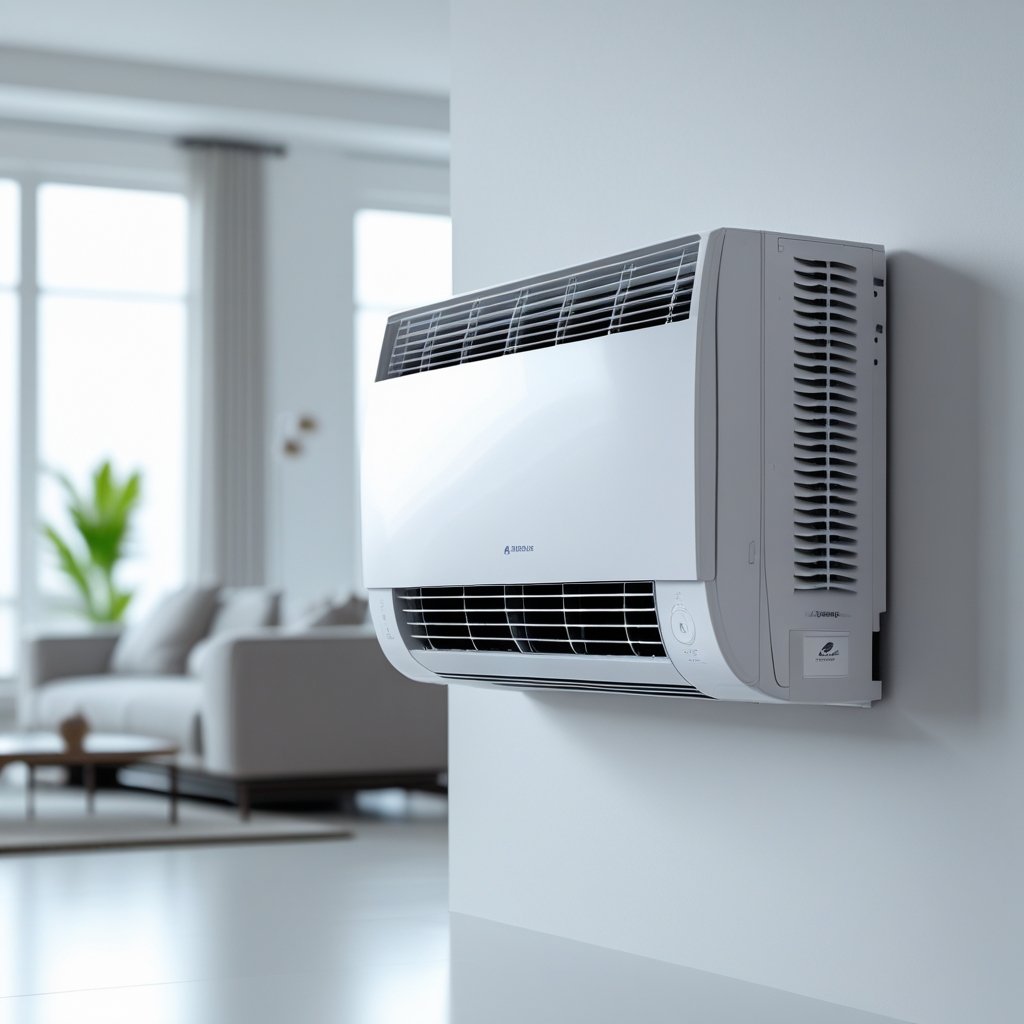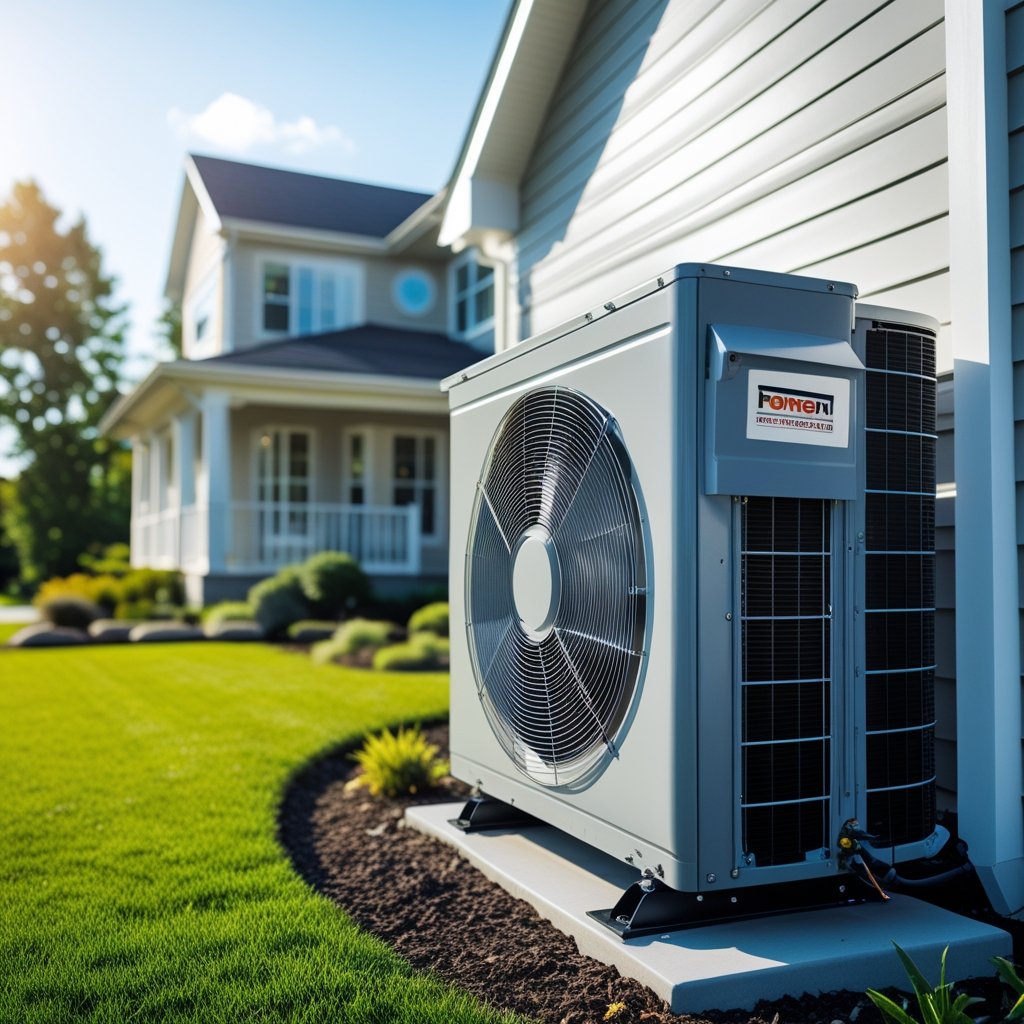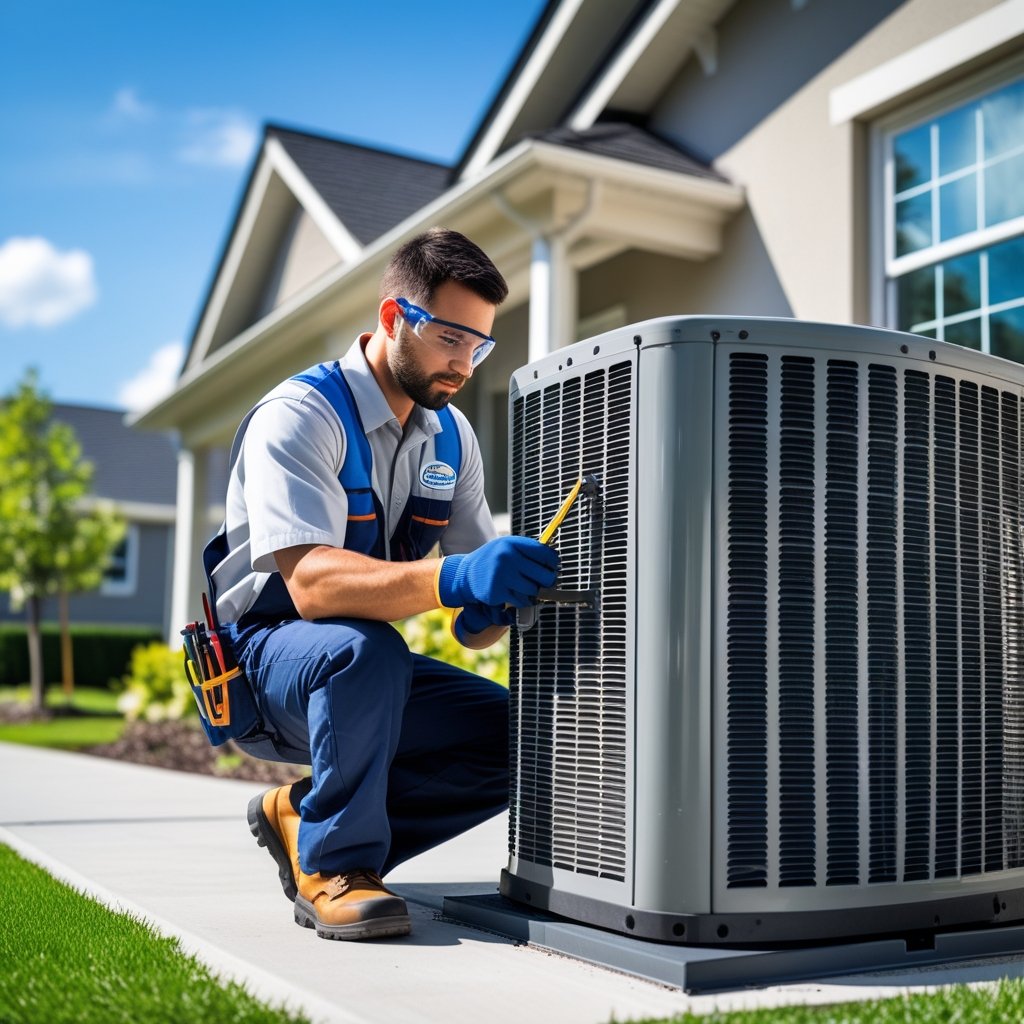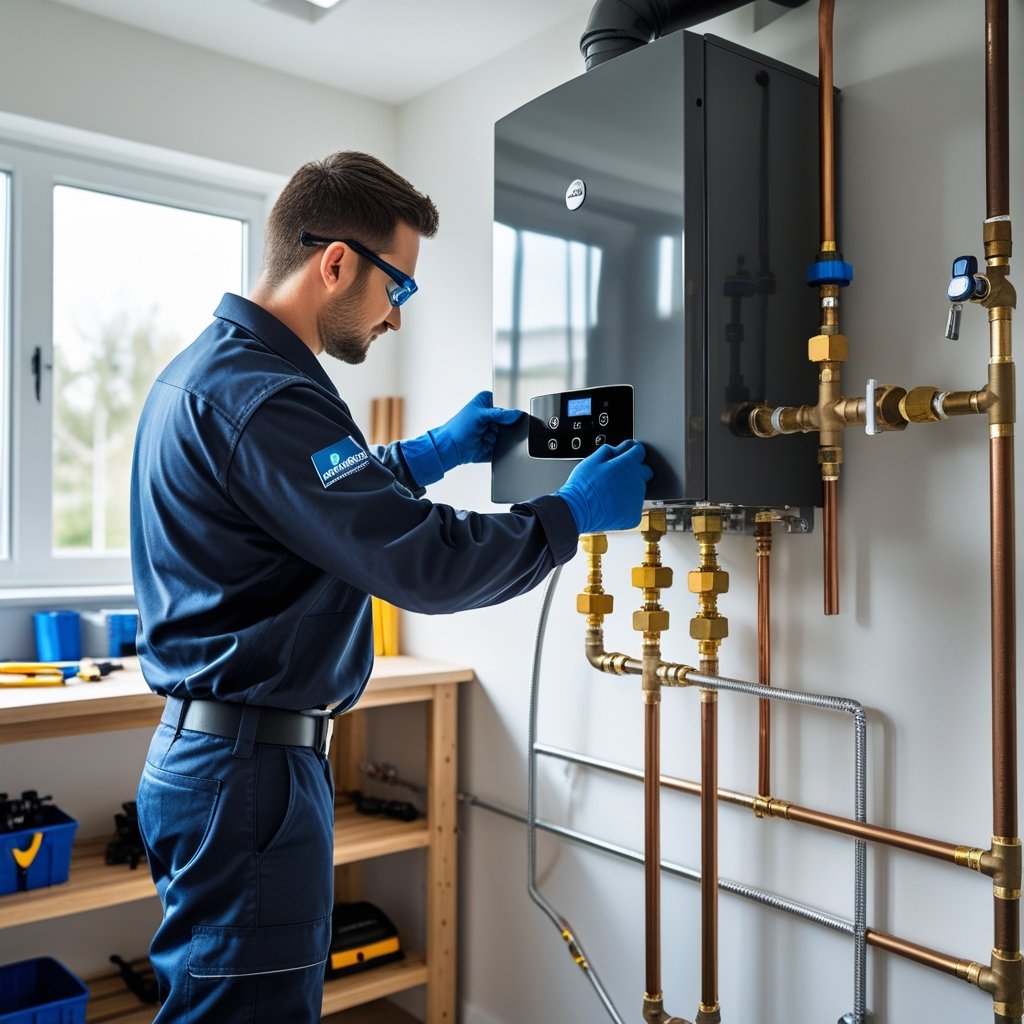Keeping your oil furnace in good shape is key to staying warm and saving money during cold months. Regular oil furnace maintenance helps your system run efficiently, reduces breakdowns, and extends its life. Even simple tasks—cleaning, checking filters, and getting professional tune-ups—can make a noticeable difference.
You don’t have to handle it all yourself. At Leo Kob Co., we’ve been helping folks in South Central Pennsylvania stay comfortable since 1904. Maybe you want to tackle some easy upkeep, or maybe you’d rather call in the pros—either way, knowing the basics helps you avoid expensive repairs and keeps your heating system steady when you need it most.
Let’s walk through some practical oil furnace maintenance tips. These steps protect your investment and keep your home cozy all winter. Curious how much you can do yourself, and when it’s time to call Leo Kob Co.? Keep reading.
Understanding Your Oil Furnace
Knowing how your oil furnace works, what parts it has, and the safety steps you should follow makes maintenance less of a mystery. It’s a bit easier to keep things running when you understand what’s going on under the hood (or, well, in the basement).
How Oil Furnaces Work
Your oil furnace heats your home by burning heating oil. Oil gets pulled from a tank through a fuel line and sprayed into a combustion chamber. A burner lights the oil, making a flame that heats up metal coils or a heat exchanger.
Air blows over those hot metal parts, warms up, and then gets pushed through your ducts. The thermostat tells the furnace when to turn on or off, depending on the temperature in your home.
Since the system burns fuel, it needs good airflow and clear venting to work safely and efficiently. If anything blocks that, you’ll notice problems pretty quickly.
Identifying Key Components
Here are the main parts you should know:
- Burner: Sprays and ignites the oil.
- Heat exchanger: Transfers heat from the flame to the air.
- Blower motor: Moves warm air through your ducts.
- Oil filter: Stops dirt from reaching the burner.
- Thermostat: Turns the furnace on and off based on room temperature.
- Flue pipe: Vents exhaust gases outside.
Check these parts for dirt, wear, or damage. For example, a clogged oil filter can slow everything down, and a dirty blower motor might mean weak airflow.
Safety Considerations
Oil furnaces involve burning fuel, so safety matters—a lot. Keep the area around your furnace clear of flammable stuff.
Make sure you have a working carbon monoxide detector nearby. This is one of those things you hope you never need, but you’ll be glad it’s there if you do.
Have a qualified technician from Leo Kob Co. inspect your furnace every year. They’ll look for leaks, test the burner, and clean or swap out parts. If you ever smell oil or hear weird noises, shut off the furnace and call a pro right away.
Regular Inspection Checklist
Keeping your oil furnace in good shape means checking a few key things now and then. Look at its overall condition, spot any leaks or cracks early, and listen for odd sounds that might signal trouble.
Visual Inspection Steps
Turn off the furnace and let it cool. Take a look for dirt, dust, or rust on parts you can reach. Check the air filter—if it’s clogged or filthy, swap it out.
Peek at the vent pipes for blockages or damage. Make sure doors and panels are snug and not warped. Soot buildup near the burner area is a red flag for efficiency and safety.
A quick look now and then can catch small issues before they turn into big headaches. It’s a simple way to keep your furnace running safely.
Checking for Leaks and Cracks
Leaks around your oil furnace can mean dangerous fumes or wasted fuel. Check visible pipes and connections for oil or water leaks every few months. Watch for wet spots or stains near the furnace.
Cracks in the heat exchanger are a big deal. If you see cracks or rust on metal surfaces, call a pro right away—cracks can let harmful gases like carbon monoxide into your home.
A flashlight comes in handy for spotting small leaks or cracks in tight spots. Leo Kob Co. techs always check these areas during regular tune-ups to keep things safe and running smoothly.
Monitoring Furnace Noises
Weird sounds usually mean something’s off. Listen when your furnace starts and runs. A normal sound is a low hum or steady whoosh.
If you hear banging, rattling, or squealing, you might have loose parts, a dirty blower, or a motor that’s on its last legs. Clicking noises could be the ignition system or electrical controls.
Jot down when and how often you hear the sounds. Telling your tech this info can speed up repairs. Paying attention to noises helps you dodge big repairs and keeps your heating reliable.
Cleaning and Replacing Filters
Clean furnace filters mean better system performance and a longer lifespan. Here’s when to change filters, how to clean them, and what kind works best for your place.
How Often to Replace Oil Furnace Filters
Check your oil furnace filter every 1 to 3 months during heating season. Dust and debris pile up fast and choke airflow, making your furnace work harder.
If you have pets or lots of dust, change the filter every 30 to 45 days. Otherwise, every 60 to 90 days is usually fine. A clogged filter can mean uneven heating and higher energy bills.
Set a reminder on your phone or mark your calendar so you don’t forget. Leo Kob Co. always recommends staying on schedule to avoid repairs and keep things efficient.
Proper Cleaning Techniques
Some oil furnace filters are reusable, but most should just be replaced. If yours is washable, use a gentle vacuum or rinse it with water.
Let the filter dry all the way before putting it back. Don’t use harsh chemicals or scrub hard—those can ruin the filter.
Always turn off your furnace before messing with the filter. That stops dust from blowing into your ducts and keeps you safe.
Choosing the Right Filter Type
Choose a filter made for oil furnaces, with a MERV rating of at least 8. That’ll trap dust and small particles without blocking airflow.
Disposable fiberglass or pleated paper filters are common. Pleated ones catch more dirt but cost a bit more. Reusable filters save money but need regular cleaning.
If you’re not sure what’s best, Leo Kob Co. can help you pick the right filter for your home in South Central Pennsylvania. The right filter keeps your system running smooth.
Burner and Nozzle Maintenance
If you want efficient heating, keep your oil furnace’s burner and nozzle clean and in good shape. Both need regular checks and care to prevent clogs or poor burning—otherwise, you’re just asking for bigger problems.
Cleaning the Burner Assembly
First, turn off the power and fuel to your furnace. Carefully remove the burner assembly.
Use a soft brush or compressed air to clear away dust and soot. Don’t forget the electrodes and air tubes—any grime can mess with the flame.
Look for cracks or worn areas on the burner. If you spot damage, replace it right away. Double-check the burner wiring for loose connections too.
Nozzle Replacement Guide
The nozzle sprays oil into the burner. Over time, it clogs or wears out, so swap it every year or two.
Make sure you get the right nozzle size for your furnace. The wrong size can mess with efficiency or cause other issues.
To replace the nozzle, turn off the system and fuel. Unscrew the old one and gently put in the new one—don’t overtighten.
After you’re done, fire up the furnace and check the flame. It should burn steady and blue. If it flickers or looks yellow, you might have the wrong nozzle or a bad one.
If you’re unsure, Leo Kob Co. has techs in South Central Pennsylvania who can help and won’t try to upsell you on stuff you don’t need.
Fuel System Care
A healthy oil furnace needs a healthy fuel system. That means checking oil lines and the tank for leaks or damage, and making sure nothing blocks the oil flow. It’s not glamorous, but it saves money and keeps your place warm.
Inspecting Oil Lines and Tank
Look over your oil lines and tank now and then for leaks, rust, or cracks. Wet spots, rust, or cracks along the lines or tank are warning signs.
Check that the tank’s foundation is level and secure. If the tank shifts or gets damaged, it can stress the lines and cause leaks. If you see trouble, call Leo Kob Co.—they know how to handle oil tanks safely.
Preventing Oil Line Blockages
Oil lines can get clogged with sludge, rust, or debris. That buildup can slow your furnace or stop it cold. Have a pro flush or clean the lines at least once a year.
Stick with quality fuel to cut down on deposits. Don’t let your tank run super low—sludge at the bottom can get sucked in. Getting regular service from someone who knows what they’re doing really does pay off. It’s saved a lot of homeowners from headaches and big repair bills.
Testing and Adjusting Controls
To keep your oil furnace safe and efficient, check and adjust the controls now and then. That means making sure your thermostat works, airflow is set right, and safety controls are doing their job. These steps can help you avoid breakdowns and shave a bit off your energy bills.
Checking the Thermostat
Make sure your thermostat works. Set your furnace to a comfy temperature and see if it turns on and off when it should. If your house is too hot or cold, or the furnace doesn’t respond, the thermostat might need a tweak or replacement.
Compare the thermostat reading to a separate room thermometer. If they’re off by more than a couple degrees, adjust or get a pro from Leo Kob Co. to check it. If your thermostat is older, clean its contacts—dust can mess up the connection.
Adjusting Airflow Settings
Good airflow means even heat and less strain on your furnace. Check that vents and grilles are clean and not blocked by furniture or curtains.
If your furnace lets you adjust fan speed, try medium—it’s usually the sweet spot between comfort and efficiency. Too high is noisy and wastes energy; too low can mean poor heat and even overheating.
Keep those air filters clean or replaced to make sure airflow stays steady. That helps your furnace and gives you better air quality.
Testing System Safety Controls
Your oil furnace has safety controls to protect you and itself. Test the emergency shut-off switch by flipping it while the furnace is running—the system should stop right away.
Look at the flame sensor for dirt or damage. This part makes sure the burner is working. If the flame goes out but fuel keeps flowing, you could have a dangerous situation.
Test the limit switch too—it shuts down the furnace if it gets too hot. If this fails, the furnace could overheat and get damaged. If you spot any issues with safety controls, get a pro to fix them pronto.
If you’re not comfortable with these tests, just call Leo Kob Co. and schedule a safety check.
Annual Professional Servicing
Getting your oil furnace professionally serviced every year keeps it safe and efficient. A yearly checkup can catch problems early and save energy. Here’s what you’ll get and how to find the right technician for the job.
What to Expect from an Annual Service
During an annual service, a tech will clean and inspect key parts—burners, heat exchangers, filters. They’ll check for leaks, test safety controls, and tweak settings for better performance.
You can expect:
- Cleaning soot and debris from burners
- Checking and replacing filters if needed
- Testing the thermostat and ignition
- Inspecting the flue pipe for blockages
- Measuring combustion efficiency
This keeps your furnace safe, uses less fuel, and can even help it last longer. Sometimes, you might even qualify for rebates or tax credits from your utility or local programs.
Finding a Qualified Technician
Pick a technician with solid experience working on oil furnaces in South Central Pennsylvania. You want someone who gives honest advice—nobody likes a hard sell for repairs they don’t really need. Take a look at reviews to see if they’re reliable and actually polite when they show up.
At Leo Kob Co., the technicians get trained to deliver quality service at a fair price. No hidden fees, no pushy upsells. You’ll get straightforward communication and they’ll respect your home while they’re there.
Before you schedule anything, make sure the technician is licensed and insured. Ask about their maintenance process—see if they cover the basics that matter. It’s smart to book service before winter hits, since that’s when everyone else suddenly remembers their furnace.
Troubleshooting Common Issues
When your oil furnace starts acting up, it’s usually one of a handful of issues. Learning to spot these problems early can save you a headache later.
Furnace Fails to Start
If your furnace just sits there, check the thermostat first. Is it set to “heat”? Is the temp higher than the room’s current temperature?
Then, check the power. Oil furnaces need a live circuit breaker and a power switch that’s actually on. Sometimes the switch gets bumped off without anyone noticing.
Don’t forget about the oil supply. Low oil or a clogged filter often keeps a furnace from starting. Change out filters once a year and keep the tank topped off.
If the burner won’t ignite, it might be a dirty burner or a bad ignition system. Leo Kob Co. can handle cleaning and regular upkeep to keep this from becoming a bigger deal.
Irregular Heating Performance
Uneven heat or a furnace that keeps cycling on and off? That usually means your furnace needs attention. Start by checking the air filters—dirty ones block airflow and mess with temperatures.
Sometimes blocked vents or ducts are the real culprit. Make sure nothing’s covering up the registers in your rooms.
A dirty burner can also drag down performance, making your system less efficient and driving up your heating bills.
If the thermostat or control board is on the fritz, you’ll notice weird cycling or uneven heating. If you spot these patterns, it’s time to let a pro take a look.
Improving Efficiency and Longevity
Keeping your oil furnace in good shape can save you money and help it last. A few basic habits and some smart upgrades can really improve its performance.
Setting Up Scheduled Maintenance
Regular check-ups keep your furnace running right. Schedule an annual inspection with a pro—Leo Kob Co. is a solid choice. They’ll clean things up, look for leaks, and tweak settings so your furnace runs its best.
During maintenance, you can expect:
- Burner and heat exchanger cleaning for better fuel burning.
- Air filter replacement or cleaning to keep airflow up.
- Fuel nozzle and pump checks to make sure they’re working right.
- Chimney and vent inspection to catch blockages or leaks.
Set up these check-ups and you’ll lower the odds of breakdowns. Your furnace will use oil more efficiently, too, so you’ll save on heating costs.
Upgrading to Energy-Efficient Options
Thinking about efficiency? Some upgrades are worth considering. New oil burners use less fuel and pollute less. Ask Leo Kob Co. about installing an adjustable or high-efficiency burner.
Other options:
- Electronic ignition systems instead of old pilot lights.
- Sealed combustion units to cut down on heat loss.
- Programmable thermostats to manage energy use more easily.
Some of these might even qualify for rebates, which is always nice. Besides saving on fuel, upgrades also cut down on wear and tear, helping your furnace last longer.
Seasonal Oil Furnace Preparation
Getting your oil furnace ready for the changing seasons helps it work better and stick around longer. Checking things before winter and shutting down the right way in spring keeps your home safe and your wallet happier.
Pre-Winter Checks
Before the cold really settles in, give your furnace a close look. Swap out the oil filter to keep fuel flowing. Double-check thermostat settings so the furnace kicks on when you need it.
Soot around the burner means it’s time for a cleaning—otherwise, you’ll lose efficiency. Change the air filter if it’s dirty. Make sure the chimney flue is clear so you don’t get smoke or carbon monoxide inside.
Test the ignition and pilot light. Confirm the oil tank’s full enough and not leaking or rusting anywhere. These steps help you avoid breakdowns and keep the house warm.
End-of-Season Shutdown Tips
When spring shows up, shut the oil furnace down the right way. Start by turning off the thermostat. If it’s recommended, drain leftover oil from the burner to prevent clogs or corrosion.
Clean out the inside, especially burners and the heat exchanger—soot and dust build up fast. It’s a good idea to get a professional inspection before you put it to bed for the season. Leo Kob Co. techs can catch small problems before they turn into big ones.
Seal the oil tank opening or cover it to block dirt and moisture. That little step helps protect your furnace investment while it’s off-duty.
Environmental and Safety Precautions
Taking care of your oil furnace isn’t just about comfort—it’s about safety, too. Handling fuel and exhaust the right way matters. Storing oil properly and preventing carbon monoxide are both key for keeping your home safe.
Safe Oil Storage
Always store oil in a tank that’s made for it—clean and sealed. Keep it away from heat and sunlight to avoid leaks or fires. Make sure the tank sits on something stable, not near drains or basements where a spill could get ugly.
Check your tank for rust, dents, or cracks now and then. If you spot any damage, fix it right away. Oil leaks are bad for the environment and your wallet. If you smell oil or see stains, get a Leo Kob Co. pro to check things out.
Keep the delivery area tidy. Put absorbent pads under valves or connections to catch any drips. Never use random containers for oil storage around the house.
Managing Carbon Monoxide Risks
Carbon monoxide (CO) is sneaky—it’s colorless and odorless, but it’s dangerous. If your furnace isn’t working right, it could produce CO. Headaches, dizziness, or worse can follow.
To keep CO at bay, get yearly furnace inspections from someone you trust. They’ll check the burner, ventilation, and vent pipes to make sure gases get out safely.
Install CO detectors on every floor, especially near bedrooms. Test the batteries every month. If an alarm goes off, don’t mess around—leave and call emergency services.
Clear vents and chimneys of snow, leaves, or nests. Blocked exhausts can push CO back into your home. Staying on top of furnace maintenance keeps your family safer and your system running strong.
Frequently Asked Questions
Knowing how to care for your oil furnace—and when to call for help—makes all the difference. Here are answers to some common questions about upkeep, what to check, and when to get a pro involved.
How can I perform regular maintenance on my oil furnace to ensure it's running efficiently?
Check your oil furnace each month during heating season. Clean or replace the air filter if it’s dirty. Keep the space around the furnace free from dust and clutter.
Test your thermostat to make sure it’s working right. And honestly, a yearly professional tune-up (Leo Kob Co. does these) can keep things running smoothly.
What items should be included on my oil furnace maintenance checklist?
Your list should cover cleaning or swapping the air filter, checking the burner and oil nozzle, looking for leaks, and testing the thermostat. Don’t forget to check the blower motor and belts.
Inspect the chimney and vent pipes for blockages, too. And give your oil tank a quick look for rust or damage.
How often should the oil furnace filter be replaced to maintain optimal performance?
Swap out or clean your oil furnace filter every 1 to 3 months, depending on how much you use it. If you’ve got pets or allergies, do it more often.
A clean filter helps your furnace heat better and saves on energy.
Is it safe to clean my oil furnace on my own, and if so, what should I pay attention to?
You can safely clean the outside and change the filter yourself. Don’t open panels unless you’re sure what you’re doing.
Watch for dust, oil leaks, or weird smells. If something seems off, call a technician.
What are some signs that my oil furnace may require professional maintenance?
Look out for uneven heating, odd noises, or a sudden spike in fuel use. Yellow or flickering flames (instead of blue) can mean trouble.
If the furnace keeps shutting off or there’s a strong smell, schedule a professional checkup soon.
What is the typical cost range for professional oil furnace maintenance services?
You’re probably looking at anywhere from $100 to $200 for a standard oil furnace tune-up. That covers things like cleaning, a good inspection, and maybe a few tweaks here and there.
Leo Kob Co. keeps things straightforward—no sneaky fees, just clear pricing so you’re not left guessing.

